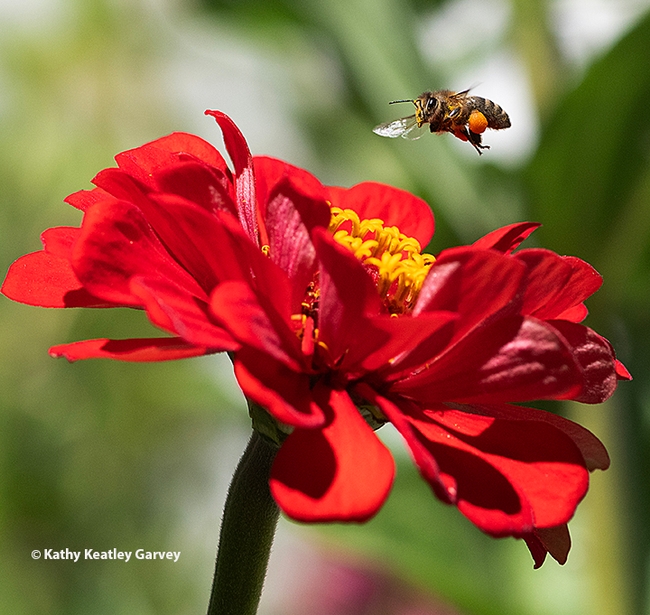It's Labor Day but "The Girls" continue to work.
"The Girls" are the honey bees, a great example of a matriarchal society. How many workers (girls) do you see foraging on your flowers? But inside the hive, "The Girls" are nurse maids, nannies, royal attendants, builders, architects, dancers, honey tenders, pollen packers, propolis or "glue" specialists, air conditioning and heating technicians, guards, and undertakers. And the males? Their responsibility is to mate with a virgin queen--and then they die.
In his newly published book, Honey Bee Biology (2023 Princeton University), UC Davis bee scientist Brian Johnson of the Department of Entomology and Nematology, covers everything from molecular genetics, development, and physiology to neurobiology, behavior, and pollination biology. It's meant for bee scientists, social insect biologists, beekeepers, and those who are just eager to learn more about honey bees.
Honey bees "evolved from the hunting wasp, a group of four clades of wasps that typically provision their offspring with insects or spiders," Johnson writes in his opening chapter, 'Natural History, Systematics and Phylogenetics.' Probably the most well known of the hunting wasps (to the nonentomologist) are the mud daubers that build their nests on the sides of people's homes."
"The split between these wasps and what evolved into the bees occurred about 120 million years ago," Johnson writes.
Basically, wasps continue to be meat-eaters, but honey bees "have gone vegetarian," as Johnson points out.
When you see honey bees foraging on flowers, gathering nectar and pollen, just remember that they are vegetarians. And especially, on Labor Day, remember how "The Girls" tend to the needs of the queen, their sisters and their brothers.
As a society, we could learn a lot from honey bees.
Attached Images:
